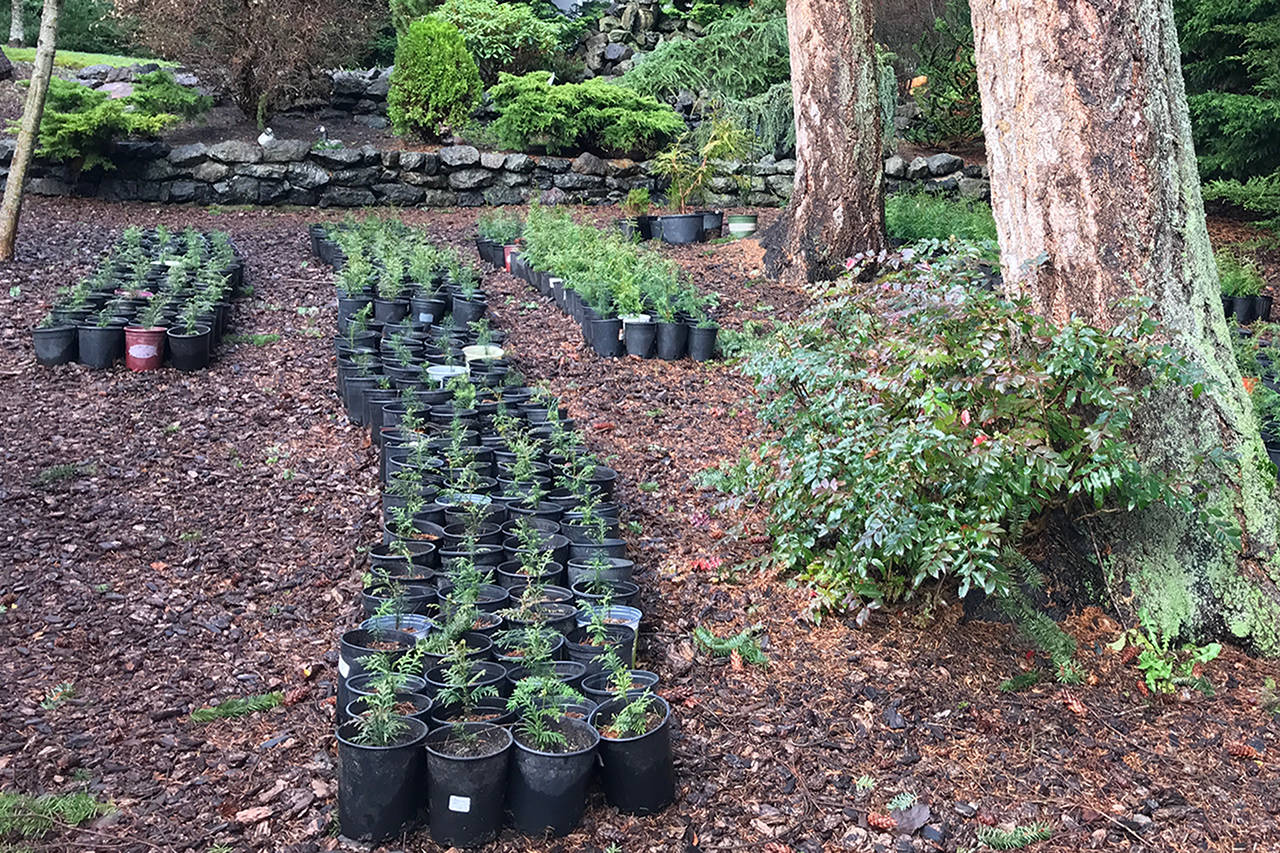About ten years ago, Sequim’s Pam and Bruce Busch decided that digging up all the fir tree seedlings in their yard wasn’t worth the effort to just throw it all away. But instead of letting their yard get overtaken by trees, they did something productive and donated to the Elwha Watershed restoration project.
Tribal representatives recently picked up nearly 1,000 seedlings of mostly Douglas and noble fir trees, with a number of cedar and hemlock seedlings in the mix as well.
According to the Busch family, that brings their 10-year total to more than 5,000 trees donated to the tribe.
“The Busch family have been an amazing partner in our work,” said Kim Williams, the revegetation supervisor of the Lower Elwha Tribe.
“Their trees have been an amazing supplement to all our planting for the (Elwha watershed) project.”
This year, according to Williams, the Busch family’s trees are heading to the Pysht River, east of Lake Crescent; until now, all of their trees had gone to the area around the Elwha River itself.
The Busch family’s tree-raising methods are fairly simple. They keep an eye out for seedlings starting to sprout in their yard, then mark them with small flags to make tracking their growth easier.
Once they’re large enough to pull out without killing the seedling, they get transplanted into composted soil in 1-gallon pots donated by the former McComb Nursery, the New Dungeness Nursery and Around Again.
More basic care follows while the health and stability of the seedlings is evaluated, and then it’s time for Lower Elwha Tribe watershed restoration crew members to come get the trees.
When asked about their inspiration to give their trees to the Elwha restoration effort, Bruce mentioned reading about the then-impending removal of the Elwha and Glines Canyon dams and the needed replanting efforts downstream of them afterward.
The trees play a crucial part in the revegetation phase of the restoration project going on around the Elwha Watershed, which started in 1992 when Congress passed the Elwha River Ecosystem and Fisheries Restoration Act. That action allowed for the removal of the Elwha and Glines Canyon dams, a pair of hydroelectric dams built in the early 1900s, to help fuel growth in the area as the timber economy boomed.
The dams also blocked the migration of salmon that had long used the river for spawning, and flooded historic cultural sites of the Lower Elwha Tribe.
The planning process for the dams’ removal was lengthy, but finally the Elwha dam was removed in 2012, and the Glines Canyon Dam came down in 2014 in the largest dam removal project to date in the U.S.
Now the tribe’s focus is on rebuilding the fish habitats in the area, which Williams says that the trees the Busch family provides are important for.
“Our main goal is to create and support fish habitats along the rivers,” Williams said. “And conifer trees like firs and cedars give vital shade and wood to the river itself and the ecosystem around it.”
The Lower Elwha Tribe plants a healthy diversity of plants around the rivers they work on, Williams said, and “reliably getting hundreds of conifers” donated each year is a huge help to their efforts.
She also said that the tribe is always looking for volunteers to help with the watershed restoration project, including people to help them with removing invasive plants and replanting more helpful vegetation.
Those interested in volunteering can contact Williams at kim.williams@elwha.org.



